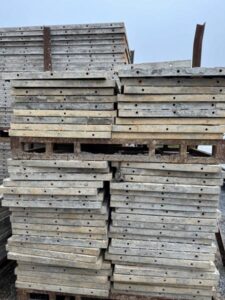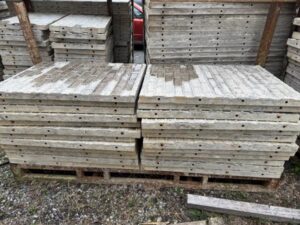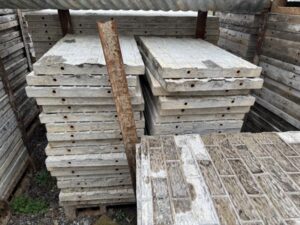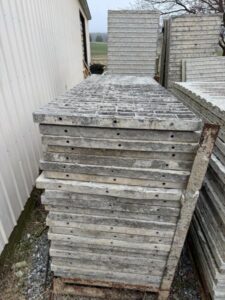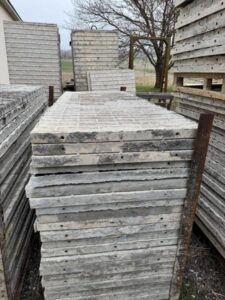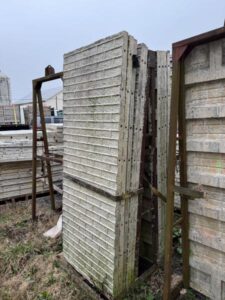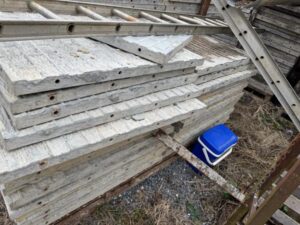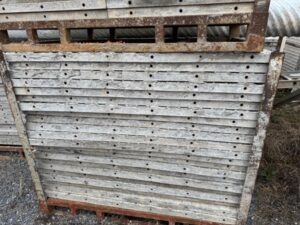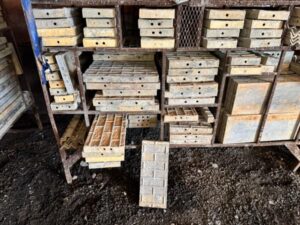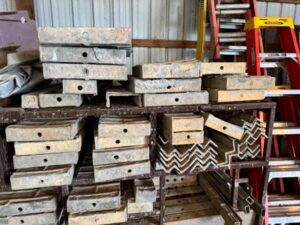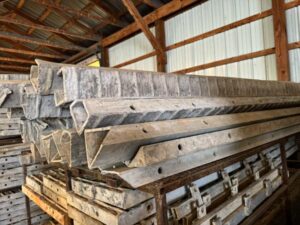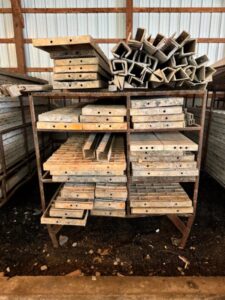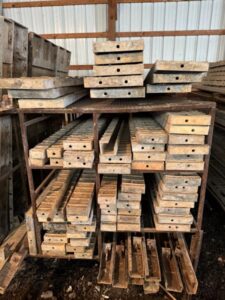Lighthouse After School
Stephens and Smith Concrete Construction participates with a Trades/Industry Program
Attracting tomorrow’s workforce to the concrete industry involves fostering early engagement and understanding of the field. Introducing high school students to construction trades through a structured workshop approach holds immense potential in shaping their perception of and interest in concrete careers.
“Our TIP program is designed to provide hands-on training and education to youth in the community, specifically in the trades industry,” said Jeremy Trujillo, the director of the Trades/Industry Program at Lighthouse After School. The Lighthouse After School Trades/Industry Program is designed to expose youth to the trades, particularly those from low-income families, in order to better equip them to pursue a well-paying career in construction, manufacturing, automotive repair, trucking, welding, and electrical work. “Our program teaches students the skills they need to be successful in the industry, while also providing them with real-world experience through on-the-job training, internships and apprenticeships. This is a great way to break the poverty cycle in our community and give youth from low-income families an opportunity to achieve a better standard of living. We are dedicated to providing the youth of our community with the opportunity to learn, grow, and succeed. With the support of local businesses and trade organizations, we are confident that our program will make a real difference in the lives of the youth in our community.”
One of the program’s current students, Sandra, shared from her experience. “For a couple years now, I helped my dad work for his and my uncle’s concrete company,” she said. “I barely had any background knowledge on concrete and cement. I just went straight into hands-on. Going to this class has given me so much knowledge on the concrete industry and how it’s portrayed. Jereme [Montgomery] really helped me understand that concrete isn’t just a job, but something that is crucial in our everyday lives. I never realized that there are different parts to concrete then just cement and water—there’s technique that goes into it. Learning more in depth about concrete has given me more of an opportunity to pursue something in the concrete industry. This class has given me a chance to think more about being a concrete contractor, and not thinking it’s just something that’s going to put food on the table.”
Jereme Montgomery, Business Development Manager for Stephens and Smith Construction of Lincoln and Omaha, Nebraska, is passionate for these efforts and spearheaded a recent six-week curriculum with Trujillo. “I believe the program with Stephens and Smith Construction was a successful first exposure to the industry,” Trujillo said. “We had an excellent and very knowledgeable professional in Jereme, who was able to teach and demonstrate the concrete industry to our teens, some of whom have never thought of this industry as an option after high school. I believe this program is a great way to introduce teens to this career path.”
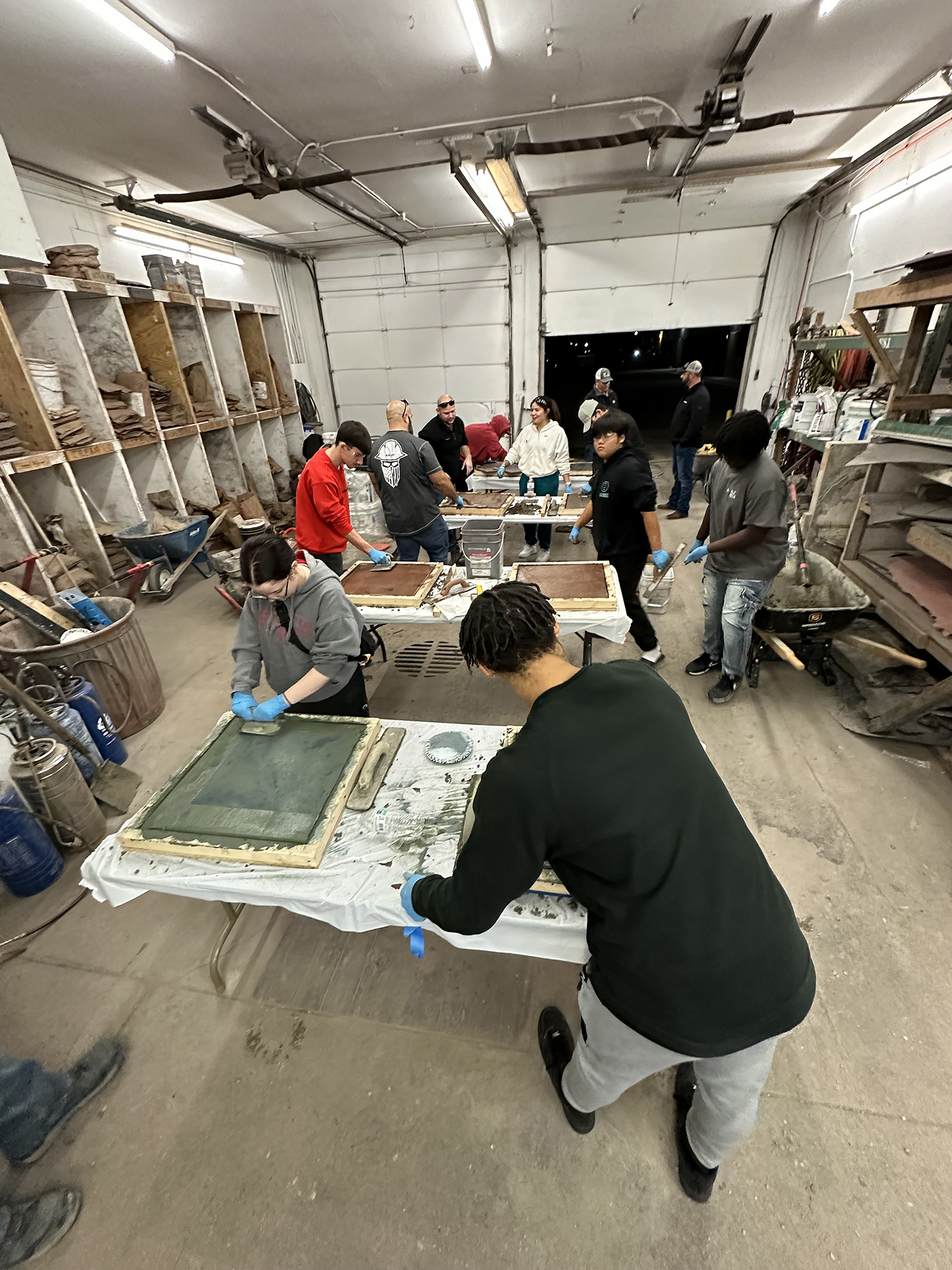 Montgomery and Trujillo are both aware that many students “know” about jobs in the industry, whether through a career fair at school or from a relative who works in the industry. “Wherever they obtain information on the industry, they don’t truly understand the depth of the career path,” Trujillo said. “Students have been talked to about all the benefits and challenges, but until you actually work with the material, see the ready-mix plant, learn about the science behind the process, and put it into action—then they start to get a true understanding of the industry.”
Montgomery and Trujillo are both aware that many students “know” about jobs in the industry, whether through a career fair at school or from a relative who works in the industry. “Wherever they obtain information on the industry, they don’t truly understand the depth of the career path,” Trujillo said. “Students have been talked to about all the benefits and challenges, but until you actually work with the material, see the ready-mix plant, learn about the science behind the process, and put it into action—then they start to get a true understanding of the industry.”
The approach with the curriculum developed by Stephens and Smith Construction helped the students get excited to learn about a potential career pathway. Designed for this purpose, the Lighthouse After School Program is a blend of theoretical knowledge and practical experience. The introductory week sets the stage by acquainting students with the vast scope of and various career avenues within concrete construction. Exploring the diverse roles, from concrete masonry to structural engineering, illuminates the breadth of opportunities available.
“This class taught me that there is more to know about this industry even after you uncover a lot,” reflected Tyler, another student from this recent six-week program. “That if you put in time and effort there is no telling what you can do in this industry; you can go places and make it far. It doesn’t take much but a little bit of effort and you can succeed.”
Subsequent weeks of the program are dedicated to immersive experiences. Tours to a ready-mix plant and local projects offered a firsthand view of the industry’s operations and real-world applications. Witnessing the machinery, observing the processes, and engaging with professionals sparks curiosity and showcases the concrete industry’s dynamism. Students get a glimpse of how theory is put into practice, making the concepts tangible and relatable.
The focus on concrete’s properties and testing is pivotal. Understanding the material’s characteristics, its durability, and the quality control measures involved instills a sense of the science behind the construction. This knowledge serves as a foundation for appreciating precision and quality in the field.
“One thing I can confidently say I learned from doing concrete with Jereme [Montgomery] is that cement and concrete aren’t the same thing,” Sajad, another of the students taking this recent course, said. “Cement is the powder and concrete is cement mixed with water and aggregate. That piece of information may not be the best type of knowledge to know, but you know what they say, ‘knowledge is power!’”
The hands-on placing and finishing architectural concrete demo in week five was, for some students, a transformative experience. Allowing students to engage physically with concrete, maneuver tools, and witness the transformation of a raw material into a finished structure fostered a deeper connection. It ignited a sense of accomplishment and demystified the process, and it had the potential to kindle a passion for the craftsmanship involved. “It was very fun, and my favorite part was making a concrete slab,” reflected Eh Di, another participating student who was impacted by the experience.

“One of my favorite classes of this program was the hands-on placing and finishing architectural concrete,” Trujillo said. “They all enjoyed seeing the process that they learned about come to life then be able to see something tangible that they built. Most of the students decided to keep their 2-by-2-foot concrete samples they created. It was great seeing how proud they were of these, carrying them to their vehicles to take home. These teens were excited to carry a 50-to-60-pound piece of concrete! They came back the following day to tell me how they took them to show their loved ones. It was the same pride you hear from professionals in the trades industry when they pass a project they worked on.” Trujillo recalls the number of times he has heard construction workers share the pride they had in helping pour a parking garage, install the roof on a building, or build that home on the corner. Likewise, Trujillo said, “I am proud of every residential home I worked on and will point it out if my family and I pass them. I saw that same pride out of our teens on the 2-by-2 concrete sample!”
In the final week, students were introduced to different pathways they could take to get in to the industry. This included just diving in to the industry after high school, apprenticeships, adding certifications, and obtaining diplomas, like a two-year associate degree in concrete construction or even getting a four-year degree. Jennifer Manatt, a representative for the Concrete Industry Management (CIM) program, joined the event on the last week to show students opportunities at San Diego State University, one of several post-secondary institutions with dedicated construction curricula.
This workshop approach is instrumental in increasing awareness of concrete industry careers among high school students. It bridges the gap between theoretical knowledge and practical application, providing a comprehensive understanding of the field. Moreover, this exposure can dispel misconceptions and stereotypes about manual labor by showcasing the innovation, technology, and skill involved in concrete construction.
By engaging students at this impressionable age, the workshop aims to ignite interest and plant the seeds for future career exploration. It offers a unique opportunity for students to explore their potential interests and consider a path they might not have previously imagined. Furthermore, the program’s duration allows for continuous engagement, enabling students to absorb information gradually and fostering a sustained interest.
In conclusion, the workshop approach—which integrates theory, practical experiences, and industry exposure over a six-week period—is a proactive strategy to attract high school students to the concrete industry. By offering a comprehensive overview, dispelling myths, and providing hands-on experiences, this program aims to inspire the next generation of skilled tradespeople, contributing to the sustainability and growth of the concrete industry.
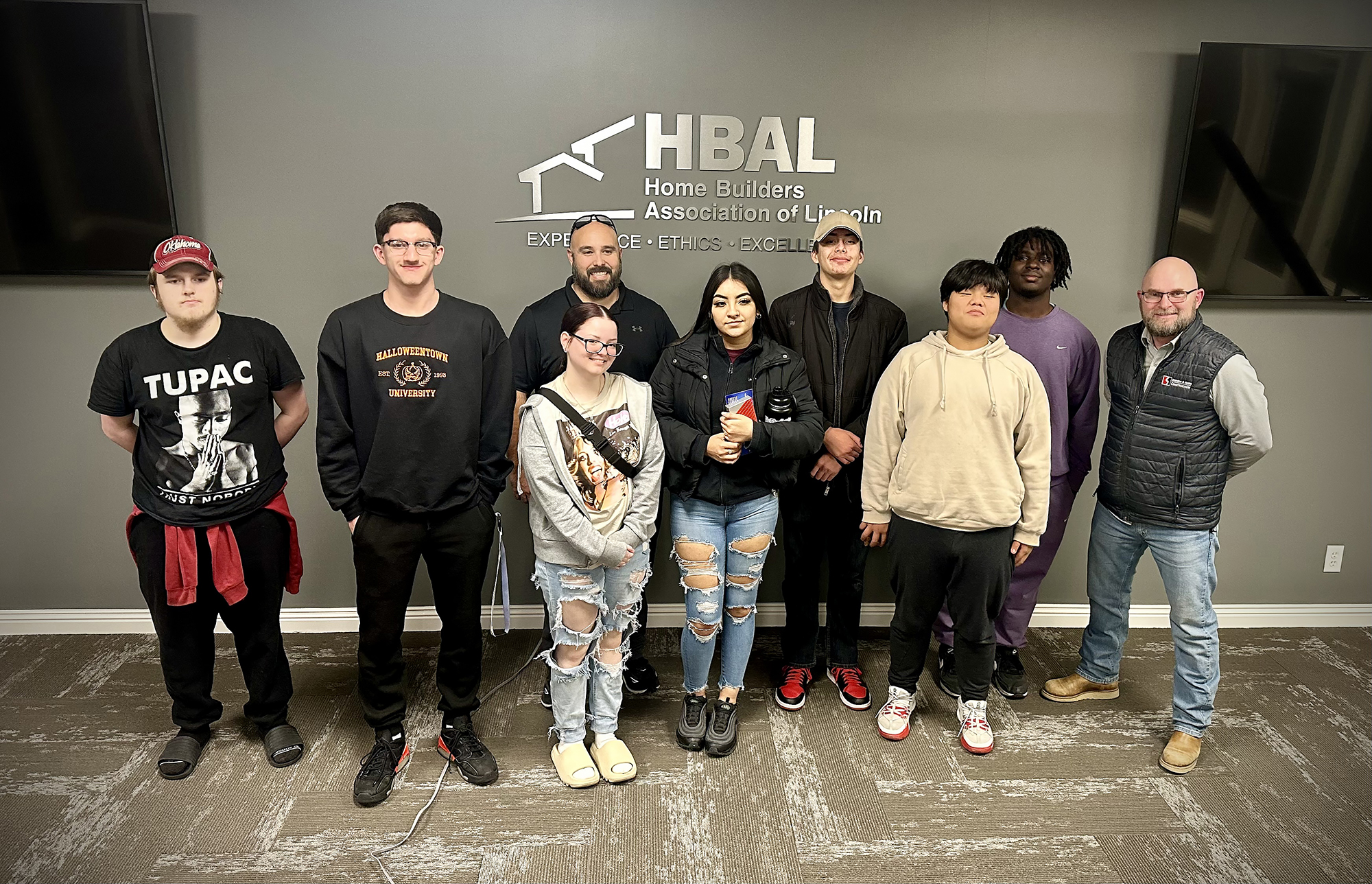
An Issue to Sink Your Teeth Into

As a reader of Concrete Facts, whether this is your first issue or you have been appreciating its content for a while, I hope you can sense the diligence that goes in to making each of these quarterly issues impactful to your business. They are designed to inspire, designed to challenge, designed to alert, prepare, and report. A magazine that began as a four-page newsletter by my predecessor, Ed Sauter, became a full-fledged magazine of six issues per year in the 2000s. We found it quite a challenge at that time to keep up with the demands of maintaining membership and being a publisher. The switch to quarterly, while it is still quite a production, has brought with it the chance to make magazines with real meat and value, magazines that contain stories and information that speak to why so many of you choose to be members and readers.
This issue is no different, except for one major difference: we have been preparing this issue for six months. The pages of this issue hold three key feature articles. The first is one that has been built from the 2023 OSHA Safety Report. After CFA Board members were challenged to respond to the OSHA findings, a consulting member, Exceed Safety, put together a three-part response that clarifies what is commonly assumed, what is commonly overlooked, and what is far too often ignored in the understanding of safety regulations. His main goal is to make your companies safer and protected. The other two feature articles also come from members—two contractor leaders of the Association have authored articles about outreach to students (who will be tomorrow’s leaders), encouraging them to see how trades really do provide opportunities for inspiring careers. Read about the efforts of Perma-Structo from Wisconsin, and Stephens and Smith Construction from Nebraska in “Build My Future” and “Lighthouse After School.”
“But wait…there’s more.” If you are one of those persons that falls victim to that classic phrase uttered on TV over the last four decades, this issue is for you. A careful watch of the growing CFA membership reveals that valuable partnerships await contractors who want to tap outside expertise to grow and strengthen their businesses. RecruiterGuy has been a consistent voice in our pages and offers his next challenge: “Big Hairy Audacious Goals.” He is accompanied in this issue by two of our newest consulting members. The first, Jerry Aliberti, offers advice on “Navigating Generational Shifts” and the second, Tier3 Technologies, updates us on the latest cybersecurity risks.
You should expect this magazine to land in your mailbox or inbox each quarter with resounding clammer, demanding—or at least strongly inviting—you to take notice and plan responses. All of this is accompanied by news you can and should use as you prepare to increase your engagement with the CFA. Why wait? Don’t set this aside for a convenient time; get in there and take a big bite.

Foundation Contractors Night: Enthusiastic Participation at The Strat

Jason Ells Custom Concrete Company Inc. jasone@customconcrete.com
I am thrilled to reach out to you following the recent Foundation Contractors Night hosted at The Strat in Las Vegas. Once again, our Concrete Foundation Association staff has demonstrated their exceptional talent in pulling off another fantastic event. With over 320 attendees gracing the occasion, the night was filled with lively conversation, networking opportunities, and a palpable sense of camaraderie. It was truly heartwarming to see so many familiar faces alongside numerous new ones, reflecting the vibrant spirit and growth of our community. I extend my heartfelt gratitude to each and every one of you for your enthusiastic participation.
I would also like to extend a special thank you to our sponsors whose invaluable contributions made the event possible. Your unwavering support and dedication to our association are deeply appreciated, and we are immensely grateful for your partnership.
As we continue to build upon the success of Foundation Contractors Night, I want to take this opportunity to remind you of the various ways to stay connected and derive optimal value from your membership in the Concrete Foundations Association:
Monday Cup of CFA: If you are not already receiving these quick updates, please let us know. This is the best way to stay informed about current events and upcoming opportunities within our association.
CFA Best Practice Groups: These meetings occur on the third Wednesday of every month and provide a platform for members to engage with peers, discuss current issues, share concerns, and explore opportunities within the industry.
Concrete Facts Magazine: Our publication serves as the voice for residential concrete industry news, market intelligence, business strategies, technical solutions, product information, and other valuable resources. Be sure to stay updated with the latest insights and developments.
CFACon24: Our summer meetings are unparalleled opportunities for professional development and networking. With engaging speakers, exhibits, and ample time for meaningful conversations with peers, these events offer invaluable insights and inspiration to take your business to the next level.
I have personally found great value in participating in these, and I encourage each of you to take advantage of these opportunities to enhance your membership experience and drive success in your business.
Once again, thank you for your continued support and participation in our association. Together, we will continue to strengthen and advance the concrete foundations industry.
Best regards,
Jason Ells

Build my Future: Collaboration Engages Youth, How did it come about? What are its Goals
Perma-Structo of Sturtevant, Wisconsin, a Certified Contractor member of the Concrete Foundations Association, has a long history of participation in efforts aimed at awareness and trades education for youth to bring about a stronger future for the construction industry. The most recent event, Build My Future, continued to demonstrate the value for all involved.
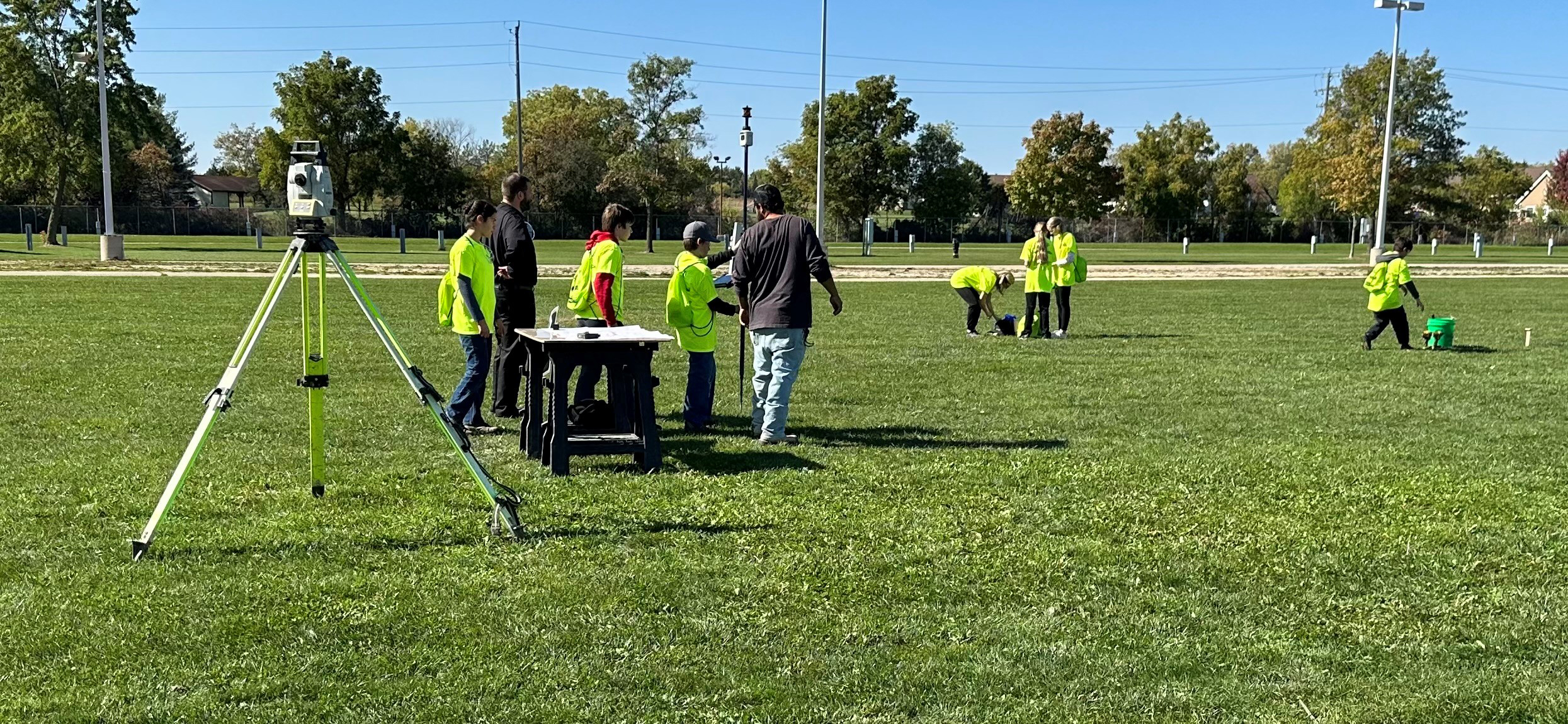 Build My Future events are being held nationwide by various local builders associations. The Racine Kenosha Builders Association (RKBA) and the Lakeland Builders Association (LBA), the two local builders associations in our area, saw a need for an event like this in their area. They developed an education committee that worked extremely hard to bring the first Build My Future event in Southeastern Wisconsin to life. Due to the small sizes of the RKBA and LBA, both executive officers agreed that partnering would be beneficial for this event, creating a larger and more impactful outcome.
Build My Future events are being held nationwide by various local builders associations. The Racine Kenosha Builders Association (RKBA) and the Lakeland Builders Association (LBA), the two local builders associations in our area, saw a need for an event like this in their area. They developed an education committee that worked extremely hard to bring the first Build My Future event in Southeastern Wisconsin to life. Due to the small sizes of the RKBA and LBA, both executive officers agreed that partnering would be beneficial for this event, creating a larger and more impactful outcome.
In planning a Build My Future event for Wisconsin youth, committee members researched and learned from many other comparable events happening nationwide. A similar event hosted by FORGE (https://forgeyourpath.org) was highlighted during an excellent presentation given at World of Concrete 2023. During this presentation, FORGE Foundation leaders discussed the successes, failures, and opportunities they had in developing a two-day event that brought local students throughout the area together to gain hands-on experience in different trades—much like the event we were planning. Committee members for the Racine event were present and brought many ideas back for development.
Perma-Structo Inc. was one of the active participants in this event, serving as a committee member, contributing as a main event sponsor, and participating as an exhibitor. Now a third-generation concrete contracting company, Perma-Structo is a founding member of the Concrete Foundations Association and a CFA-Certified foundation company. As a company who has worked with many local high school students over the years to educate and bring hands-on concrete experiences to the classroom and on jobsites, this event was truly a dream come true! They jumped on board at the earliest opportunity to help, knowing they would be able to reach so many more students and future trades personnel in a short period of time.
The Build My Future SE Wisconson event was a two-day event. The first day was dedicated to middle school students and the following day was for high school students. Schools and homeschooling families in the surrounding area were invited to attend. The primary goal was to build the youth’s knowledge of the trades while exposing them to different career paths throughout the construction industry with hands-on experiences.
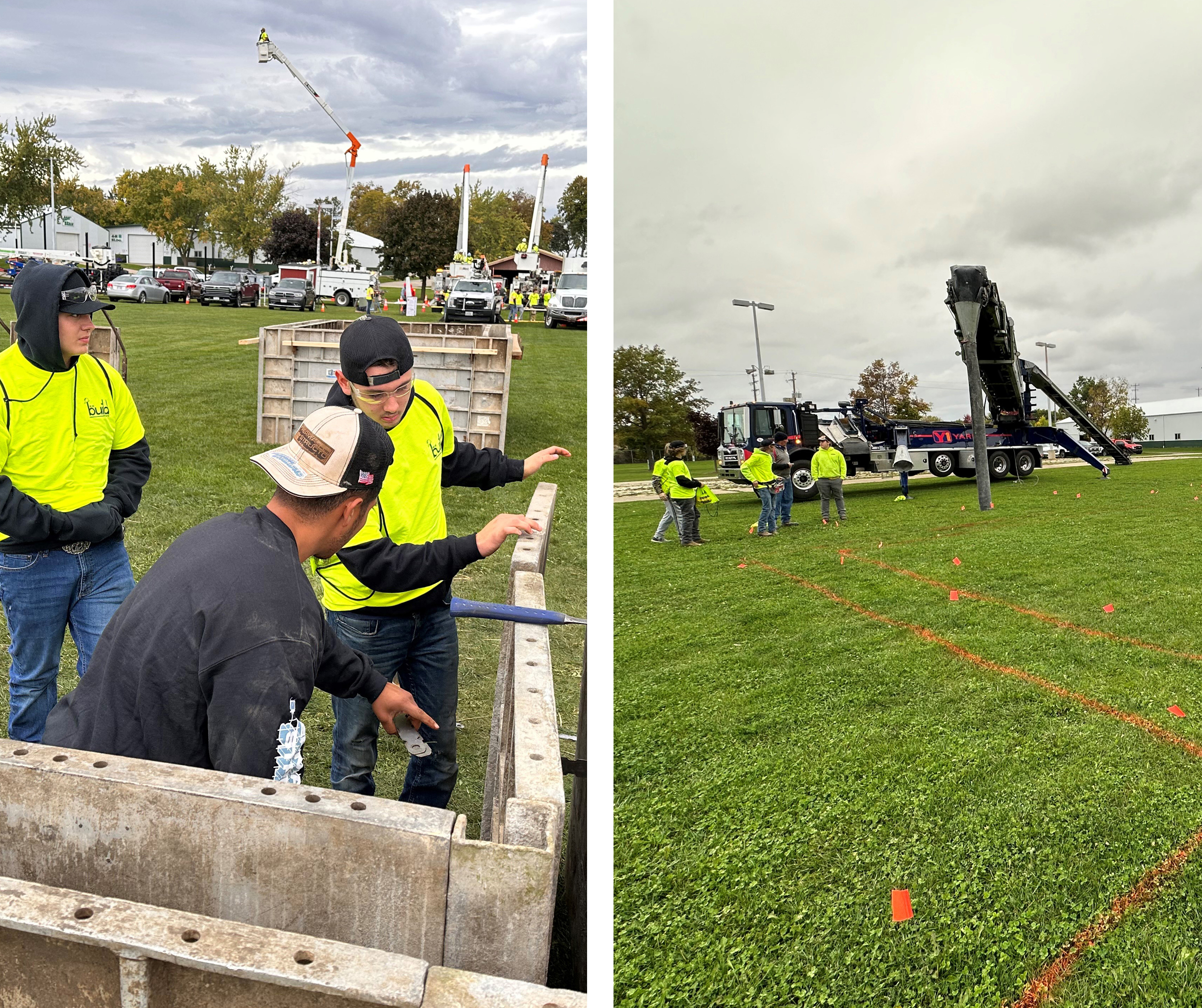
“Labor shortages in the trades are no secret,” said Cassie Beaudin with Perma-Structo. “Events like this are a great way to go straight to the future labor force and show them there are options for their future other than what schools have traditionally encouraged.” Data has shown that nearly 40% of the construction industry could or will retire by 2031. Cole Beaudin added, “Schools across the nation have neglected the importance of alternative career paths that can be taken, like the skilled trades. Because of this, the construction industry has felt the negative impacts over the years. Organizations and events, like Build My Future, are actively working on changing this narrative and bringing the awareness needed to have a successful future workforce within our industry.”
To which trades or stations were the students exposed?
Even though it was the first year for this event, the committee tried to get a wide variety of trades to participate. The event had representation from the following trades: concrete, utilities, plumbing, roofing, HVAC, and carpentry. Students were able to experience a wide variety of activities: using power tools, installing roof shingles, welding, laying brick, operating equipment such as mini excavators, soldering, figuring takeoffs for blueprints, and using a virtual reality experience system to “drive” oversized vehicles.
“With the number of students that we were anticipating, we knew our company had to incorporate many different facets of the concrete industry for everyone to experience a taste of it,” said Cole Beaudin with Perma-Structo. “So, we had experienced field employees on site daily to help assist with activities and teaching.” The Perma-Structo employees who helped in this event were just as excited as students were, ready to show off their skills and the work they do daily. “We could tell they took pride in their work and educating the students,” Cole said.
The Build My Future format normally has students spending 10 to 15 minutes at an activity. This requires each activity to be manageable and not overly complex. “We chose three activities that we found would be the quickest and easiest to understand and participate in,” Cole said. “The first was using our electronic Leica layout system and having the students lay out a mock footing. The second was assembling and disassembling our 4-foot-tall aluminum Western Forms. The third was allowing the students to use the remote control to operate our Putzmeister TB 110 conveyor and maneuver it through a maze.” The Perma-Structo team’s vision was to show students various components of what it is like working for a concrete foundation contractor. Of these three activities, assembling and disassembling the aluminum forms brought the most excitement and curiosity from both middle schoolers and high schoolers. “This feedback makes us hopeful that we have the potential for future ‘wall dogs,’” Cole added.
What were the results?
Over the course of the event, exhibitors were able to interact with approximately 2,000 students. The feedback from attendees was very positive, with most people expressing how pleased they were with the level of hands-on opportunities available to the students. Many schools have already asked about next year’s event and have expressed their interest in signing up for future events.
“Besides the measurable impact, it was awesome to see just how excited the students were and how interested they were in the activities,” said Cassie. “I watched Cole ask a group of about 10 girls if they wanted to set up some forms, and I think they were the most enthusiastic group I saw throughout the entire event. They dove right in and were eager to work as a team to complete the task. As a woman in construction, it’s so encouraging to me to see young women get excited about the trades. There are so many opportunities for women, and this early exposure really highlights the trades as a viable career opportunity.”
Perma-Structo leadership was extremely humbled with the support the event had from many local companies. There was participation in various ways, including the many hours of planning the committee put in, volunteering and hosting activities the days of the event, and the overwhelming financial support, which was needed to put on an event like this. Even local concrete and national product vendors who were supportive of their efforts—such as Ozinga Ready Mix, Yard One, and Western Forms—participated and/or gave financial support by sponsoring the event. “Everyone responded to the invitation quickly when we called and spoke to them about the event,” Cole said. “To see it all come together as the students exited the buses and the excitement they had, it was impressive to see young kids jump into the activities.”
When asked how the overall assessment of this initial Build My Future in SE Wisconsin went, Cole Beaudin spoke up quickly for the group and the committee. “I would say it was a huge success, considering the tremendous participation and positive feedback from both companies and students during its very first year. If this opens the idea or possibility of a career in the trades that the students never even considered, that is a win. From my experience with high school projects that Lindsy Beaudin and I have worked on in the past together, I typically gain 1-2 employees after graduation from those classes and teaching opportunities. Those individuals are usually some of the best new hires, because they have basic knowledge and expectations when they walk through the door. I hope this holds true for all companies in the trades that are helping expose the youth to their trade. The money and time we spent on this event was 100% more impactful than any job posting I could ever pay for. Everyone involved did an excellent job, and I couldn’t be prouder of their dedication and hard work with this event.”
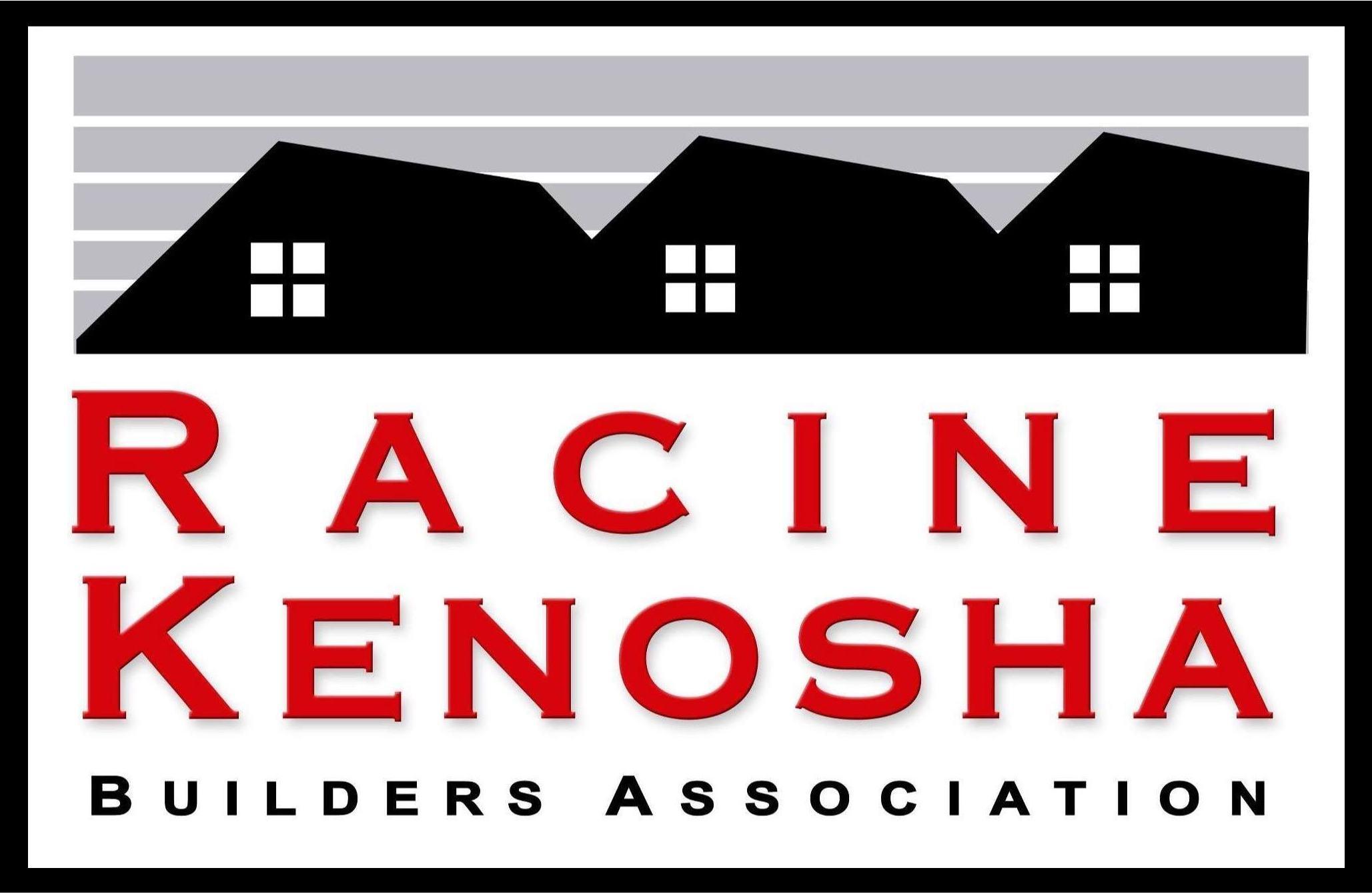
For more information on the event, visit the website:
https://www.buildmyfuturesewi.com/
Paying For My Future: RKBA Adds Scholarships Resurrecting and reforming a forgotten benefit.
In the late 2000s, the Racine Kenosha Builders Association discontinued its longstanding scholarship program due to the impact of the Great Recession. The tradition faded from view until recently, when the team at Perma-Structo, led by third-generation leader Cole Beaudin and spearheaded by his spouse Lindsy Beaudin, revisited the idea during their involvement in Build My Future SE Wisconsin. Cole, a past recipient of an RKBA scholarship, understood the invaluable support it provided on his journey to an accounting degree.
Lindsy, taking the chair position of the newly formed RKBA Scholarship
Committee, navigated challenges posed by budget constraints. The RKBA mandated that any scholarship revival must be self-funded by committee activities. Lindsy expressed pride in the collaborative efforts between Perma-Structo and the association for the Build My Future event, which surpassed expectations. Simultaneously,
she diligently worked in the background to resurrect the scholarship program.
The reintroduced program, distinct from typical scholarship initiatives, offers both traditional higher education scholarships and unique “direct to workforce” scholarships. Applicants in the latter category need to secure an intent-to-hire letter from an employer, while those pursuing traditional education paths must provide an acceptance letter to their chosen program. The committee emphasized the significance of this inclusive approach, which provides options for young adults entering the trades, whether they opt for further education or an immediate entry into the workforce.
The committee-funded scholarship achieved immediate success in its inaugural year, awarding five scholarships totaling $6,000. Buoyed by this positive response, the committee is expanding application windows to at least spring and fall, possibly considering a year-round schedule with quarterly award meetings to better serve workforce-minded applicants.
Perma-Structo envisions a promising future for the workforce, attributing it to the exposure generated by Build My Future SE WI and the diverse scholarship opportunities offered by the association. For those choosing the direct to workforce path, the scholarship addresses practical needs such as tool purchases, uniforms, work boots, and sometimes personal protection equipment. Lindsy concluded by emphasizing the scarcity of scholarships for young adults entering the workforce directly, highlighting the potential positive impact of these initiatives.
To view the scholarship, visit the website:
https://rkbabuilders.com/scholarships/.
Why Membership Matters
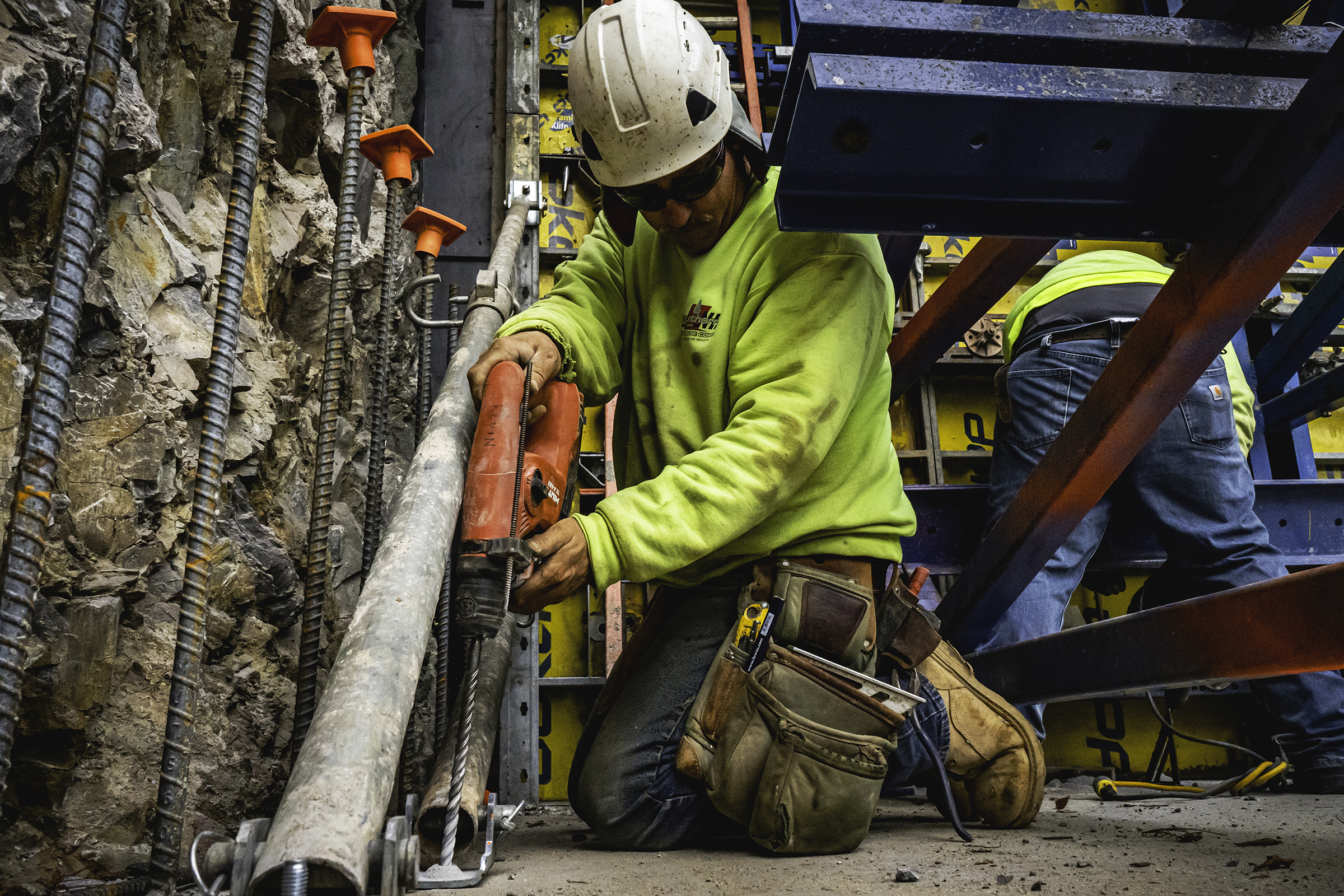
“PRECISION FOCUS!!” I have had the privilege in the last two years of being introduced to the field of concrete construction in an incredibly dynamic way. While it started with photographing job sites for my brother-in-law, Russ Talpey of Talpey Construction, I have been inspired to continue telling the story I find so compelling. Not long after I started capturing project images and footage, I found a platform for these stories with the CFA and became a member. SINCE JOINING THE CFA my world has exploded. The relationships between professional contracting companies that care about each other continues to open new avenues for me to explore the field of concrete construction by way of introduction to expanding circles of contractor to contractor, contractor to supplier, and supplier to contractor. Through my camera lenses, I have captured more than just the heart of concrete construction. WITH PRECISION FOCUS, I am now also capturing an unprecedented revival of the industry; an evolution of construction practice and a passion for the future that many may have formerly felt out of reach. As we all know the saying, “our best work gets buried.” Now, the hard work of so many talented individuals is being captured in perpetuity for all to see. Through photography and videography, captivating stories are now being told – and a new generation is watching.
I am proud to be one of the #cfaconcretepros and to do my part to continue building a stronger future for tomorrow’s construction workers and leaders. The CFA is a remarkable association to participate in and continues to grow and evolve with the industry. If you have seen my images, including the cover of this magazine or the 31-1 issue, come and follow me on Instagram @mintdroneshots or LinkedIn @mint-drone-shots for many more. (Deleted sentence). I would love to meet you, help you find new ways to share your work and maybe find eyes like mine to capture your craft. Russ Talpey has helped me become a member of this “Concrete Family”. If you are interested in joining this family too, then let me say “Welcome”! Grab your “PRECISION FOCUS!!
NATE SALTER – mintdroneshots.com
Concrete Reasons to set BHAG (Big Hairy Audacious Goals) for your Concrete Business
By Bill Humbert, recruiterguy.com
There is a difference between properly setting a goal and making a resolution for your business. I know. I have been in business for 34 years.
Why not make a “resolution”? The answer is easy. Are many New Year’s resolutions kept? Over my past 34 years, maybe two New Year’s resolutions were kept—and they were easy resolutions.
Every time that I decided to evolve my Talent Attraction Advisor business, I set a BHAG—and was successful.
Who taught me proper goal setting? When I was a freshman at DeMatha Catholic High School in Hyattsville, MD, a future Basketball Hall of Fame basketball coach, Morgan Wootten, was my home room teacher, my world history teacher, and a customer on my Washington Post paper route (the revenues were used to pay my way through DeMatha).
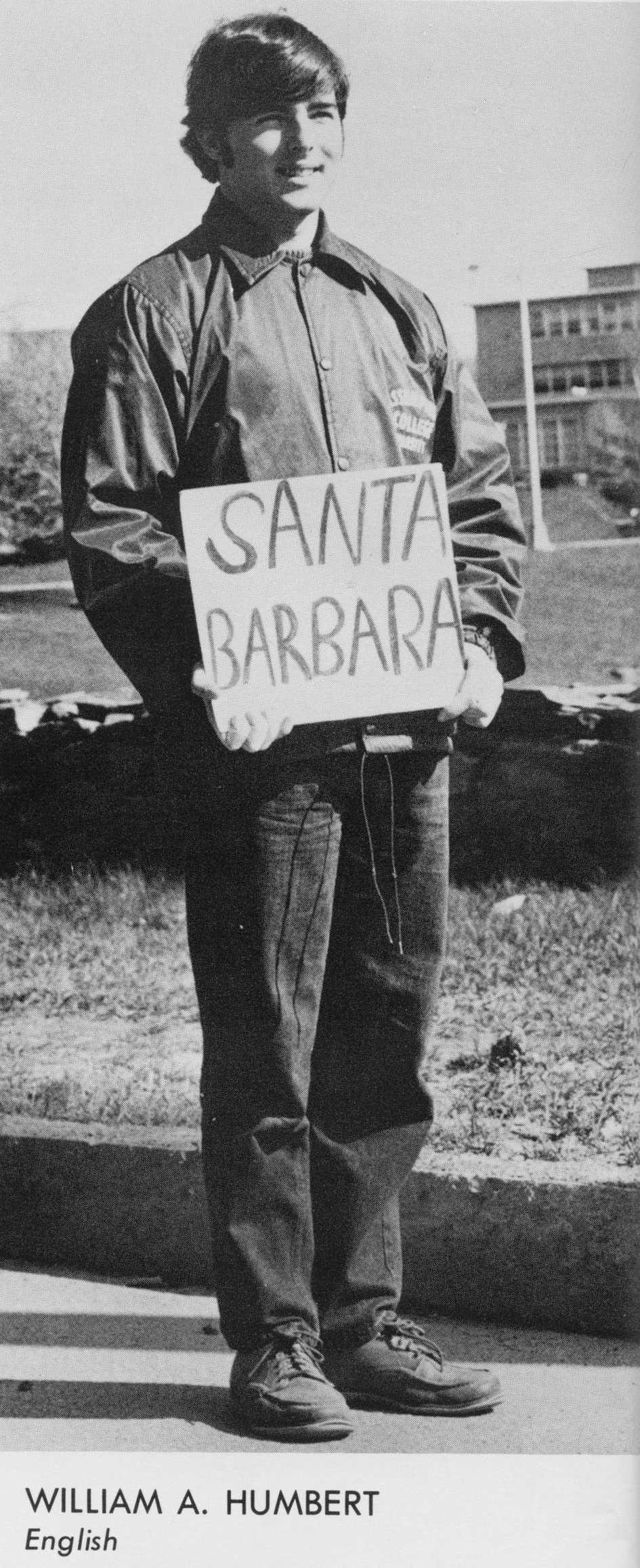 He discussed proper goal setting with our class. While he never discussed his personal goals with us, as a famed high school basketball coach, he must have set goals for his development of high school boys into skilled basketball players. Many of his players graduated from college and then played in the NBA. Adrian Dantley, DeMatha ’73, was inducted into the Basketball Hall of Fame.
He discussed proper goal setting with our class. While he never discussed his personal goals with us, as a famed high school basketball coach, he must have set goals for his development of high school boys into skilled basketball players. Many of his players graduated from college and then played in the NBA. Adrian Dantley, DeMatha ’73, was inducted into the Basketball Hall of Fame.
Fast forward to 2009 when I wrote my first career search book, RecruiterGuy’s Guide To Finding A Job. For the first time, I sat down and created an acronym to make setting a goal easy to remember. It is as important to set career goals as it is to set business goals. Why? Without a properly set goal, a person or a company does not have a path to follow to succeed.
On Easter Sunday in 1969, I was home from Assumption (College) University in Worcester, MA for the holiday week. After mass, I perused The Washington Post and saw an ad from Greyhound Bus Company. They said they could take a person from Washington, D.C., to Los Angeles in five days for $99. I thought, “I can do that!”
I properly set a goal to hitchhike from College Park, MD, to Los Angeles in five days and invited my best friend at the time, Jack, to join me. We departed from College Park on the on-ramp from US Route 1 towards Route I-270 on August 2, 1969. When we arrived in Los Angeles on August 6, 1969, we could not have anticipated the risks we faced. These stories show up in a book I am writing on the journey. Talk about reinforcing Proper Goal Setting! Until reading “Helter Skelter” by Vincent Bugliosi in 1974, we did not know how close we came in 1969.
How do you properly set a BHAG business goal? The following is my acronym that you may use, but first, you must be passionate about meeting that goal. Otherwise, it is simply a resolution.
My acronym is SCAMPS
S – Specific with a Strategy – A goal must be specific with a strategy to meet your goal. One way to test the strength of your strategy is to see if it is repeatable. My buddy and I achieved our goal of hitchhiking from D.C. to LA in five days in 1969. In 1970, we set a “stretch goal” of hitchhiking from D.C. to Santa Barbara in five days—and made it. After completing two amazing English courses at UC Santa Barbara, we set a goal to return to Washington, D.C., in five days and made it again. We were probably more reliable than Greyhound in those days. In 1971, I set myself a BHAG goal: to hitchhike from Las Vegas, NV, to Boston, MA, in 24 hours. I completed that goal in 16 hours. My strategy worked and was repeatable.
C – Challenging – A goal must be challenging. Your brain loves challenges. Challenges are exciting—especially when you attain your goal. That process can then reinforce the excitement for your next goal. Think about how attaining challenging goals excites and engages your team!
A – Attainable – Your brain is smart! If there is no viable strategy, your brain yawns and says, “I am bored.” If your goal is not challenging enough, your brain is not interested in working on the goal. It will provide you with many distractions that will keep you from earning the reward of your goal. Demonstrate to yourself or your team how your goal is attainable.
M – Measurable – Your goal must be measurable. When we set the goal to hitchhike across the US, we decided to hitchhike from College Park to Kansas City on I-70. Then we planned to head south on I-35. We needed to be in Kansas City by our second night to have a reasonable chance of being in LA in five days. We were able to measure our progress against that goal. If you want to grow your business, your goal may be an increased earnings and profitability goal. When during the year will your earnings be the highest? The summer? My suggestion is to measure your progress toward meeting your goals weekly or monthly. What activities will help you meet your goal? Those activities need to be measured. If you fall behind your increased earnings curve, it is Important to raise your business activities to get back on or ahead of track.
P – Public – If your BHAG goal is public with your team and others who support you, they will hold you accountable. They will ask about your progress towards meeting your goal. We used homemade signs to engage with drivers while we hitchhiked. The photo is my college yearbook photo I selected with one of these signs (I still use this Santa Barbara sign when I speak).
S – Specific End Date – The S’s make up the bungee cord that ties SCAMPS together. Your specific end date provides your business with a target and enables you to use the measurable step to see where you are relative to making your goal.
Every organization is different, even in the concrete industry. Your goals will differ from other companies. If you have never set a business goal, now is not the time to set a BHAG. Practice properly setting smaller goals. Achieve those goals! Then your brain will believe your BHAG is attainable. Expect success!
Want to read more about this journey? My book with a working title of “True Tales of a Hitchhiking Goal Setter – Hitchhiking 15,000 miles Criss-crossing America in 1969 to 1971″ is soon to be published.
Ensuring Worker Safety: The Vital Role of Alternative Fall Protection Plans
By Tim Neubauer, MS, CSP
For construction, safeguarding the lives of workers is not just a regulatory mandate but is also a moral obligation. As the construction industry grapples with the persistent challenge of fall-related fatalities, the importance of proper fall protection measures becomes increasingly evident.

Data from 2020 reveals a stark reality: out of 1,008 construction fatalities, 351 were due to falls to a lower level. These numbers, sourced from the Bureau of Labor Statistics, are a somber reminder that these deaths are not mere statistics but preventable tragedies.
In response to this critical issue, the construction industry has turned to both technology and innovative strategies to enhance worker safety. Yet, amidst these advancements, many companies still cling to the concept of the Alternative Fall Protection Plan rather than embracing new technology or processes.
The AFPP, as outlined in OSHA 1926.501, presents itself as a viable option. However, its complexity and the requirement for continual upkeep and compliance with OSHA standards underscore the plan’s intricate nature, highlighting a resistance to change in the face of emerging solutions.
This article offers a comprehensive discussion on the significance of AFPP in the construction industry, highlighting both the urgency of the fall protection issue and the complexity involved in implementing these plans.
Overview of OSHA Standards on Employer Obligation
The Occupational Safety and Health Administration sets forth stringent standards for construction safety. Central to these is the “General Duty Clause,” an overarching requirement that compels employers to provide a work environment devoid of recognized hazards likely to cause death or serious harm.
When it comes to fall protection, 29 CFR 1926.501 regulation specifically mandates employers to furnish fall protection systems that adhere to the criteria detailed in 1926.502. This includes, but is not limited to, the provision of personal fall arrest systems, safety net systems, or guardrail systems for employees working on surfaces like formwork, reinforcing steel, or leading edges.
A crucial aspect of these standards is the presumption that traditional fall protection methods are generally feasible and do not introduce additional hazards. Employers are expected to use these standard methods unless they can demonstrate that an alternative approach, compliant with 1926.502(k), is more suitable for their specific workplace situation.
This directive places significant responsibility on employers to not only ensure fall protection but also to critically assess the suitability of standard methods and, if necessary, develop and maintain an alternative plan that offers equal or greater safety for their workers.
Alternative Fall Protection Plans Under OSHA 1926.502
Under OSHA 1926.502, AFPPs are applicable “only to employees engaged in leading edge work, precast concrete erection work, or residential construction work who can demonstrate that it is infeasible or it creates a greater hazard to use conventional fall protection equipment.” This delineation is crucial, as it recognizes the unique challenges and risks inherent in these types of work, where standard fall protection measures may not suffice or could even exacerbate hazards.
In addition, the fall protection plan needs to be prepared by a qualified person, developed specifically for the site, and be kept up to date. The definition of a “qualified person” is precise, referring to someone with recognized credentials or extensive experience, who is capable of resolving problems related to the subject matter, work, or project.
Furthermore, the AFPP must be a living document, adaptable and responsive to the evolving nature of the construction site. Any changes to the plan are subject to approval by a qualified person, ensuring that the plan’s integrity and efficacy are maintained. The plan must also be readily available at the jobsite, reflecting all approved changes.
Lastly, the implementation of the AFPP is entrusted to a “competent person,” defined as someone capable of identifying existing and predictable hazards and who is authorized to take corrective measures to eliminate them.
Essential Components of an AFPP
Each Alternative Fall Protection Plan must be comprehensive and contain clearly defined elements that collectively ensure a high standard of safety is maintained throughout the construction process:
- Responsibility Assignment: The plan must specify who is responsible for implementing and overseeing various fall protection measures, including emergency response. Clear definitions of fall protection terms and procedures are crucial for a shared understanding among all personnel.
- Company Safety Policy: The AFPP should include a detailed company policy on fall protection, reflecting commitment to safety and adherence to OSHA standards. This policy guides the actions and expectations on the construction site.
- Training Protocols: The AFPP must specify the type and extent of training required for workers and supervisors, and it should encompass the use of fall protection equipment, hazard recognition, and emergency protocols.
- Pre-Work Safety Meetings: Regular safety meetings prior to work are essential. These sessions reinforce the AFPP’s guidelines, update employees on specific site hazards, and address any concerns or changes in the work environment.
- Documentation: Thorough documentation is vital and must detail the reasons why conventional fall protection methods were deemed infeasible or why they could create a greater hazard in specific situations. Additionally, the plan should include a written account of the alternative measures taken, such as the use of scaffolds or ladders, to mitigate fall hazards.
Site-Specific Considerations and Feasibility Studies
The effectiveness of an AFPP is closely tied to how well it addresses the specific characteristics of each construction site. Customization of the AFPP to the site’s unique layout, conditions, and activities transforms it from a generic guideline into a practical, site-specific strategy.
Integral to this tailored approach is conducting feasibility studies. These studies form the backbone of the AFPP, providing a well-reasoned, evidence-based foundation for the alternative fall protection strategies employed. Key considerations in this process include:
- Assessing Worksite Constraints: Evaluating whether physical fall protection methods, such as guardrails or safety nets, are viable given the site’s physical layout and the nature of the work being performed.
- Alternative Safety Measures: If standard methods are found to be impractical, the study must explore alternative means of mitigating fall hazards. This might involve the use of specialized equipment or modified work practices.
- Risk of Greater Hazards: The study should analyze if the implementation of conventional fall protection could inadvertently introduce greater risks. For instance, certain safety equipment might obstruct movement in tight spaces, potentially leading to other types of accidents.
- Documentation of Findings: All conclusions and decisions derived from the feasibility study must be thoroughly documented within the AFPP. This includes detailed explanations of why standard fall protection methods were deemed infeasible or hazardous in specific scenarios and the rationale behind the chosen alternative measures.
Implementing and Adapting the AFPP
The successful implementation of an AFPP requires more than just thorough planning; it requires vigilant execution and adaptability. The dynamic nature of construction sites means that the AFPP must be actively monitored and updated. Regular reviews are essential to ensure the plan remains effective and relevant, adapting to evolving site conditions, changes in work practices, and the introduction of new equipment. This constant vigilance helps maintain the plan’s effectiveness in reducing risk.
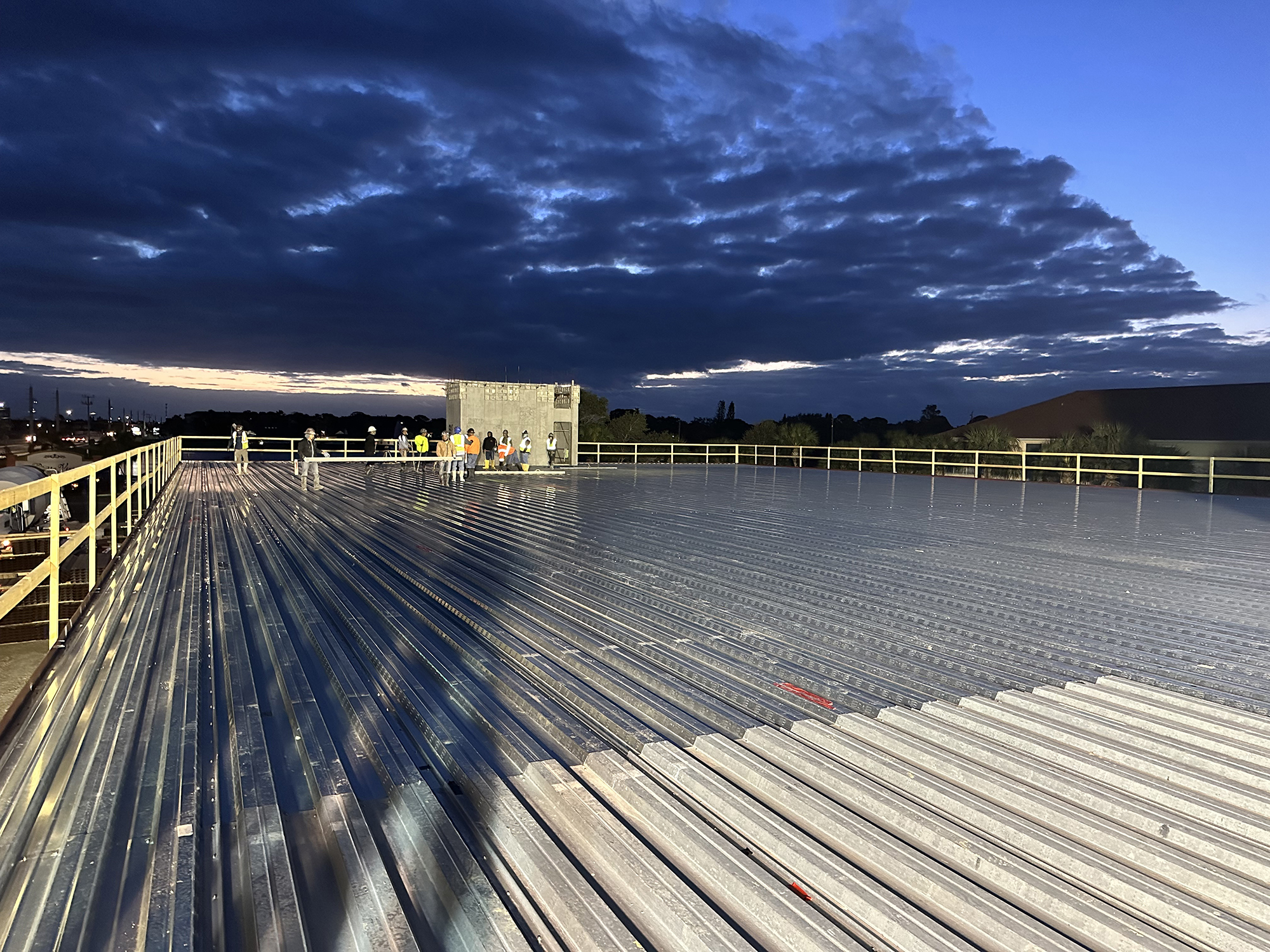 In addition, a critical component of the AFPP is its incident response protocol. In the event of a fall or a near-miss, it is crucial to conduct a thorough investigation to uncover the underlying causes of the incident. This investigation should assess whether the AFPP was correctly followed, identify any unforeseen hazards, and pinpoint any inadequacies in the plan. Based on these findings, modifications to the AFPP may be necessary to prevent similar incidents in the future. This iterative process, in accordance with OSHA’s directive, ensures that the AFPP is not a static document but a living tool that evolves based on real-world experiences and contributes to a safer work environment.
In addition, a critical component of the AFPP is its incident response protocol. In the event of a fall or a near-miss, it is crucial to conduct a thorough investigation to uncover the underlying causes of the incident. This investigation should assess whether the AFPP was correctly followed, identify any unforeseen hazards, and pinpoint any inadequacies in the plan. Based on these findings, modifications to the AFPP may be necessary to prevent similar incidents in the future. This iterative process, in accordance with OSHA’s directive, ensures that the AFPP is not a static document but a living tool that evolves based on real-world experiences and contributes to a safer work environment.
Overall, Alternative Fall Protection Plans are not just regulatory necessities; they are fundamental to fostering a culture of valuing and protecting the workforce in the face of complex and varied construction site challenges.
A Closer Look at the OSHA Top 10: A Concrete Perspective
The Occupational Safety and Health Administration (OSHA) annually releases a list of the top ten safety violations to shed light on the most frequent risks found in the workplace. While this list serves as a national safety barometer, it’s vital to delve deeper into industry-specific implications, particularly for concrete professionals.
The recent CFA survey and comparison against OSHA’s list reveal a nuanced reality—our industry’s “Top 10” might be better considered a “Top 7”. Several of the OSHA categories are interrelated, particularly those pertaining to fall protection, which appears in various forms throughout the list. Here’s how our industry measures up and why some seemingly irrelevant OSHA categories shouldn’t be overlooked:
Fall Protection – General Requirements: While maintaining the dubious honor of topping the list for the 13th year, the industry has made strides in implementing innovative protective measures. However, slips and falls remain a leading concern, calling for continued vigilance.
Hazard Communication: Proper labeling and communication can prevent many workplace incidents. Yet, the allure of convenience sometimes leads to oversight, such as using non-approved containers for fuels, highlighting the need for persistent training.
Ladders & Scaffolding: Ladders often fall out of focus, possibly due to their less frequent use in some sectors. Scaffolding safety has improved, but customization and training must continue to keep pace with the complexity of commercial projects.
Respiratory Protection & P.P.E.: Engineered controls have successfully reduced hazards, decreasing the need for respirators. Nonetheless, personal protective equipment, particularly eye and face protection, still face challenges with compliance, particularly during seasonal transitions which affect visibility and comfort.
Machine Guarding: An area often underestimated is machine guarding, critical for mitigating risks with material conveyor trucks and other machinery. A single incident of a missing guard underlines the importance of vigilance and proactive safety measures.
Lockout/Tagout: This category is strong within our industry, though occasional use of improper tagging methods—like vapor barrier tape—indicates room for improvement.
Powered Industrial Trucks & Fall Protection Training: Training for equipment operation is critical, and while many operators are certified, the aim for a larger trained workforce continues. Fall protection training also illustrates the challenge of transitioning workers to unfamiliar tasks, reinforcing the need for refresher courses.
In assessing the aggregate data, CFA’s survey participants rated the industry high in Personal Protective Equipment and Fall Protection measures but identified a need for improvement in Hazard Communication and Ladders. This reveals a deeper truth: knowledge varies significantly, and many contractors do not perceive certain OSHA categories as applicable to their operations.
This sidebar underlines the concrete industry’s commitment to adapting safety strategies to the specifics of the trade. While OSHA’s Top 10 provides a baseline, the CFA’s refined list prioritizes actionable insights tailored to the nuanced needs of concrete professionals. Embracing a safety culture means not only meeting the standards but exceeding them by understanding and applying a context-driven approach to safety. Learn more by contacting CFA headquarters or one of our safety consultant members.
About the Author
Tim Neubauer, MS, CSP, is the founder of Exceed Safety. With three decades of practical experience, Tim has honed his expertise in enhancing workplace safety within the concrete industry.
Navigating Generational Shifts in Family Construction Businesses While Keeping the Construction Legacy Alive
Prepared by: Jerry Aliberti, Owner of Pro-Accel
 Surviving and thriving in the construction business is no walk in the park! Passing the family business on to the next generation should be a moment of pride. But let’s be real: it is a challenge loaded with all sorts of fears. Fear of letting go, fear of change, and the fear that the legacy might not continue as envisioned.
Surviving and thriving in the construction business is no walk in the park! Passing the family business on to the next generation should be a moment of pride. But let’s be real: it is a challenge loaded with all sorts of fears. Fear of letting go, fear of change, and the fear that the legacy might not continue as envisioned.
Original owners started as hands-on owner-operators, putting in 60-plus hours from Monday to Friday each week and then sacrificing weekends for back-office work. Many ball games were missed, and vacations were spent worrying if the projects were on track. Working hard is practically in their DNA, making it tough to loosen the reins.
Having been in the construction business for over 20 years and having chatted with many contractors nationwide, I have noticed a common trend of emotions and challenges that people experience when going through the process of passing a family business on to the next generation. In this article, we will dig into the emotional journey of older-generation construction owners as they grapple with passing the torch to a younger, more tech-savvy, but less experienced generation.
The Battle to Let Go
I have spoken to contractors who were losing most or even all their profits. The younger generation wanted changes for more efficiency. They were looking for solutions outside the company. The older generation resisted, fearing any change could sink the ship for good. It is crucial to understand that all successful businesses must adapt to current times to stay ahead of the competition. The cost of inaction will only compound your losses.
Imagine building a construction business from scratch, pouring sweat and dedication into every brick and concrete pour. Now, you are at the point where you need to hand it all off, and that is a move filled with fear and doubt. The daily grind has become your way of life, and letting go feels like stepping into the unknown. It is a challenge packed with uncertainties and concerns about whether the younger generation can carry the torch forward.
Generation Gap in Management Styles
One significant hurdle lies in the differences in management styles. The older generation shaped the business with certain values and methods, which may clash with the younger generation’s approach. The fear of letting go stems from uncertainty about whether the younger leaders will steer the ship in the same direction or forge a new path. Older generations may run the company with an iron fist, with an “it’s my way or no way” approach, and with a lack-of-trust attitude while the younger generation is more open to collaboration and receiving outside opinions. Trust and relationships are also viewed differently.
Concerns About Readiness and Commitment
Older owners worry about the younger generation’s readiness for leadership roles. Leading people to success is crucial, especially in construction, where there are so many large personalities. The construction business demands a constant sense of urgency and commitment to stay on top. The truth is, you won’t know the next generation’s leadership abilities until you start letting go and allow them to prove their capabilities.
Emotional Attachments
Beyond the fear of change, emotional attachments play a significant role in the hesitancy to let go. The family construction business is more than just a source of income; it is also a legacy and a symbol of identity. Passing it on signifies not just a transfer of ownership but also an overwhelming emotional transition that can be hard to navigate.
Navigating the Technological Wave
One key difference between generations lies in their approach to adapting to new resources. The older generation may find the influx of new tech and external resources overwhelming, and they may even feel afraid of it. The fear comes from unfamiliarity, as they deal with the idea of their “kids” utilizing these modern resources. The fact remains that change is hard and younger generations have a proficiency in migrating to newer systems, advanced technology and revolutionary innovations.
The Power of Strategic Planning
I strongly advocate engaging in annual strategic planning. This process not only facilitates the smooth transition between generations but also serves as a valuable platform for collaborative discussions on long-term goals. This provides a comprehensive snapshot of the company’s current status and a roadmap of how to implement necessary changes for future growth while keeping the company’s core values in place.
In addition, by gaining a thorough understanding of strengths, weaknesses, opportunities, threats, aspirations, and goals, you position your company well ahead of the competition.
This approach allows you to take on projects that align with the capabilities of everyone within the company, ensuring profitability in your current position. In addition, it provides a roadmap for each year, outlining the necessary steps to achieve long-term objectives and breaking down larger goals into smaller, manageable tasks. Once again, this is a great way to collaborate and communicate effectively and combine different thoughts for the future of the company.
In Conclusion
Change is unavoidable, especially in the dynamic world of construction. It is crucial to adapt to the evolving landscape swiftly. What propelled your business to a $5 million annual revenue will not be sufficient to reach $15 million and beyond. To handle the increased workforce and larger projects, a shift in skills and processes is imperative.
Many companies experience revenue growth without upgrading the essential components of their operations. This includes the shop’s management, deficient processes, insufficient technology for operational efficiency, unchanged employee task delegation, outdated hiring processes, and poor resource allocation. Keeping these aspects stagnant while revenue expands introduces considerable chaos within the company.
Employees seek structure and desire to witness a seamless transition not only across generations but also in the company’s growth, executed efficiently and responsibly. As your business scales, resist the temptation to cling to outdated habits and approaches. Instead, view change as an opportunity for growth and enhancement.
Despite these challenges, effective succession planning, open communication, and an understanding of each generation’s strengths can create a smoother transition.
Recognizing that the younger generation brings fresh perspectives and can leverage modern resources can ease the fear of change. Recognizing that the ownership generation holds valuable experience, business acumen and practical way of thinking through challenges can prevent excessive risk for exposure from abrupt change. It is a delicate balance between tradition and modernization with an end goal of ensuring the legacy lasts for more generations to come.
The “Oops” Factor: How Human Error is Powering a Multibillion-Dollar Cybercrime Empire
By Jeff Robinson, President & CEO of Tier 3 Technology Solutions
You may have heard this statistic before: According to an Accenture study, 43% of all cyberattacks target small businesses. The explanation is simple enough—small businesses have valuable data and resources worth targeting but often don’t prioritize cybersecurity.
Even more daunting for small business owners? A study by IBM found that 95% of successful cyberattacks are preventable and only occur because of human error.
 Now, that is an alarming statistic on paper. It is powerful enough to catch eyes and turn some heads, but what does it actually mean? How exactly does human error aid cyber attackers, and how can a small business take practical, effective steps toward mitigating the impact of human error?
Now, that is an alarming statistic on paper. It is powerful enough to catch eyes and turn some heads, but what does it actually mean? How exactly does human error aid cyber attackers, and how can a small business take practical, effective steps toward mitigating the impact of human error?
In this article, we will delve into the real-world context behind the scary “ninety-five percent” statistic and lay out some simple steps you can take to drastically boost your cybersecurity efforts.
Defining Human Error
At first glance, this might seem like a no-brainer. “Human error” means that someone messed up, right? Well, yes. Kind of.
Like so many things in life, the concept of human error in cybersecurity is complicated. It is not characterized by black-and-white delineations (a team member either messes up or doesn’t) but exists instead on a spectrum filled with grays and is dependent on context.
That didn’t really make things easier, did it? Let’s look at a couple of examples and gain some clarity.
Dave, who is entirely fictional and therefore fair game to pick on, leaves a company laptop full of sensitive data at a Starbucks. To make matters worse, his password, which he recently changed, is written on a sticky note inside the laptop. That is an obvious case of outright “What were you thinking?” human error. If the wrong person finds that laptop, your business’s entire network is served up on a silver platter.
But in our second example, let’s suppose Dave is cautious with his passwords and mindful of his company equipment. He stops at Starbucks, sends a few emails, packs up his things, and goes on his way. But a few weeks later, a team member in accounting pays a very large (and very fraudulent) invoice. This devastating loss is eventually traced back to Dave’s ten-minute work session at the local Starbucks. How? He did everything right, didn’t he? Unfortunately for Dave, and everyone who works with Dave, he did all the right things while using unsecured public Wi-Fi, which opened the door for a bad actor to gain access to Dave’s machine. Public Wi-Fi networks often lack encryption or use weak encryption protocols. This means that data transmitted over the network, such as login credentials, personal information, or financial data, can be intercepted by an attacker.
While Dave was waiting for his venti caffè latte to cool down, someone was gaining access to his network. Once inside, after familiarizing themselves with the environment, the attacker determined that the easiest and most lucrative attack method was to simply change the account and routing numbers on an invoice from the company’s largest vendor. This example of human error is less egregious than the first, but the results were just as costly. Dave either lacked the proper training on public Wi-Fi networks, or he didn’t heed the training he had received.
This brings us to our third example, where we have Stacey in accounting, Dave’s coworker who green-lit the payment of the fraudulent invoice. It was the same invoice from the same billing representative from the same vendor Stacey deals with every month. She followed protocol and did everything right—except she didn’t notice that the routing and account numbers had been changed. This is an example of human error, and the bank will see it that way, too. It’s also a mistake that any of us could make—and quite easily, at that.
When you compare the first scenario (Dave’s abandoned laptop and clumsy, sticky-note password) to the incredibly sophisticated attack that fooled Stacey, suddenly human error does not look so cut and dry.
While technological advancements will always play a critical role in protecting digital assets, human error hamstrings even the most robust technology and remains a significant contributor to successful cyberattacks. Let’s get into some specifics.
The Role of Human Error in Cyberattacks
Understanding how human error (in all its myriad forms) contributes to cyber threats is essential for businesses as they develop effective mitigation strategies.
Phishing Attacks. Despite advancements in email filtering and security protocols, phishing remains one of the most prevalent forms of cyberattacks. Team members may unknowingly click on malicious links or download harmful attachments, providing cybercriminals access to sensitive data.
Weak Password Practices. Weak passwords and password reuse across multiple accounts create significant security risks. Team members often choose easily guessable passwords or fail to update them regularly, making it easier for hackers to gain unauthorized access to systems and networks.
Unauthorized Access. Team members may inadvertently grant unauthorized individuals access to sensitive information by failing to secure their devices properly or sharing login credentials with unauthorized parties.
Social Engineering. Cybercriminals exploit human psychology through social engineering tactics to manipulate team members into disclosing confidential information or performing actions that compromise cybersecurity defenses.
Practical Steps to Mitigate Human Error in Cybersecurity
While it is impossible to eliminate human error entirely, businesses can take simple and proactive measures to greatly mitigate its impact on their cybersecurity posture.
Team Member Training and Awareness. Implement comprehensive cybersecurity training programs to educate team members about common threats, phishing tactics, and best practices for secure behavior online. Regular awareness campaigns can help reinforce these lessons and keep security top of mind.
Strong Password Policies. Enforce strict password policies that require team members to create complex passwords, enable multifactor authentication (MFA) wherever possible, and regularly update their passwords. Consider implementing password management tools to simplify this process and encourage compliance.
Access Control and Privilege Management. Implement robust access control mechanisms to restrict team member access to sensitive information based on their roles and responsibilities. Regularly review and update user permissions to prevent unauthorized access.
Security Software and Tools. Invest in advanced cybersecurity solutions such as firewalls, antivirus software, and intrusion detection systems to detect and mitigate threats in real-time. Additionally, deploy email filtering solutions to identify and block phishing attempts before they reach team members’ inboxes.
Incident Response Planning. Develop a comprehensive incident response plan outlining procedures for identifying, containing, and mitigating cybersecurity incidents. Conduct regular drills and simulations to test the effectiveness of the plan and ensure team members are prepared to respond effectively in the event of a breach.
Cultivate a Culture of Security. Foster a culture of security within the organization by emphasizing the importance of cybersecurity at all levels. Encourage team members to report suspicious activities promptly and reward proactive security behavior.
And finally, continue to educate yourself on how threat actors exploit human error and implement policies to protect yourself.
In the example we outlined above, in which Stacey fell victim to a convincing invoice fraud attack, Stacey would have benefitted from a simple policy calling for the review and verification of a vendor’s bank info before authorizing payment. She would also have benefited from a policy calling for a second team member to review the transaction before it was approved. Everyone has an off day, and having a second set of eyes to look things over could have saved our fictional company from financial ruin. While this example is fictional for the sake of this article, this scenario is very real. We have seen it occur multiple times and, unfortunately, we will continue to see it.
If you are unsure where to begin when it comes to implementing a more robust set of policies and awareness training, reaching out to a managed security services provider (like Tier 3 Technology—www.gotier.com, a consulting member of the Concrete Foundations Association) is a great first step. Whoever you choose to consult with, remember that a quality MSSP will want to get to know you, your environment, and your goals before rushing to send over a contract. A simple conversation and a cyber risk assessment are strong first steps and can tell you a lot about your cybersecurity posture—even if you choose not to work with an MSSP at all.
Human error remains a significant challenge in cybersecurity. Still, businesses can mitigate its impact through proactive measures and a multilayered approach to defense. By investing in team member training, implementing robust security policies and technologies, and fostering a culture of security awareness, organizations can significantly reduce the risk of cyberattacks caused by human error—and hopefully start chipping away at some of those scary statistics.
For Sale: Brick-Pattern Aluminum Forms
A contractor member of the Association has the following set of forms offered for sale.
Aluminum Forms, brick pattern with texture, having a 6/12 hole pattern are offered for sale. Grade B condition for these forms. List of form sizes includes:
109 – 36″x 8′-0″
45 – 36″ x 6′-0″
56 – 36″ x 4′-0″
60 – 36″ x 3′-0″
47 – 36″ x 2′-0″
More than 200 additional filler and form sizes and lengths with corners and two (2) A-Frame baskets. Download compete inventory list here.
Asking price $110,000, o.b.o. For more information, please contact Neil at 540-435-7728.

